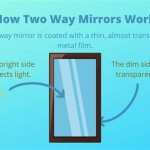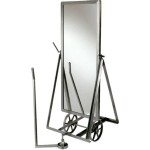Can You Use iPhone To Screen Mirror On Samsung TV?
The ability to display content from a smartphone onto a larger screen, such as a television, has become increasingly popular. This functionality, known as screen mirroring, allows users to share photos, videos, presentations, and other content with a larger audience. Samsung TVs are widely used and iPhones are equally popular, so the question of compatibility between these two devices often arises. This article will explore the options available for screen mirroring an iPhone to a Samsung TV, detailing the technologies involved and the steps required to achieve a successful connection.
Direct compatibility between iPhone's AirPlay and Samsung TVs has evolved over time. Initially, AirPlay was exclusive to Apple devices. However, Samsung began integrating AirPlay 2 support into their smart TVs, significantly simplifying the process of screen mirroring from an iPhone. This integration eliminated the need for third-party hardware in many cases, making it a more streamlined experience for users already invested in both Apple and Samsung ecosystems.
AirPlay 2: The Native Solution for Screen Mirroring
AirPlay 2 is Apple's proprietary wireless streaming protocol that allows users to stream audio and video content from Apple devices to AirPlay 2-compatible devices, including select Samsung TVs. The implementation of AirPlay 2 technology in Samsung TVs provides a straightforward and seamless method for iPhone users to mirror their screens. Not all Samsung TVs are created equal, however, so it's important to verify the model year and specifications of the TV.
To confirm if a Samsung TV supports AirPlay 2, users can consult the TV's documentation, the manufacturer's website, or the TV's settings menu. Typically, AirPlay settings can be found within the 'General' or 'Apple AirPlay Settings' section of the TV's menu. If AirPlay is listed and enabled, the Samsung TV is compatible with the technology.
The process of screen mirroring via AirPlay 2 is relatively simple. First, ensure that both the iPhone and the Samsung TV are connected to the same Wi-Fi network. On the iPhone, swipe down from the top-right corner to access the Control Center. Locate and tap the 'Screen Mirroring' icon. A list of available AirPlay-compatible devices will appear. Select the desired Samsung TV from the list. A passcode may be displayed on the TV screen; enter this passcode on the iPhone to establish the connection. Once connected, the iPhone's screen will be mirrored on the Samsung TV.
AirPlay 2 offers several advantages. It provides a relatively high-quality streaming experience with low latency, making it suitable for watching videos and playing games. It also allows users to control playback from their iPhone, including pausing, fast-forwarding, and rewinding. Further, AirPlay 2 supports multi-room audio streaming, enabling users to play music simultaneously on multiple AirPlay 2-compatible devices, including their Samsung TV.
Troubleshooting AirPlay 2 connections typically involves ensuring that both devices are on the same Wi-Fi network, that AirPlay is enabled on the Samsung TV, and that both devices have the latest software updates. Restarting both the iPhone and the Samsung TV can also resolve connection issues.
Using Third-Party Apps for Screen Mirroring
If a Samsung TV does not support AirPlay 2, alternative solutions exist for screen mirroring an iPhone, primarily through the use of third-party applications. These apps act as intermediaries, facilitating the connection between the iPhone and the Samsung TV. These apps operate by using the local Wi-Fi network to establish a bridge between the two devices. The mirroring quality and features available often depend on the specific app used and the capabilities of the network and devices.
Several third-party screen mirroring apps are available on the App Store. Popular options include "MirrorMeister," "AirBeamTV," and "Replica." These apps typically offer free trial periods or limited functionality in their free versions, with full functionality requiring a paid subscription or one-time purchase. It is important to research and compare different apps to find one that meets specific needs and offers good performance.
The setup process for these apps generally involves downloading and installing the app on the iPhone, and then installing a corresponding app or enabling a feature on the Samsung TV. The instructions for each app may vary, but typically involve connecting both devices to the same Wi-Fi network and following the on-screen prompts to establish the connection. Once connected, the iPhone's screen will be mirrored on the Samsung TV.
The performance of screen mirroring via third-party apps can vary depending on several factors, including the strength of the Wi-Fi network, the processing power of the iPhone and Samsung TV, and the efficiency of the app itself. Latency can sometimes be a concern, particularly when playing fast-paced games or streaming high-resolution videos. It's imperative to ensure both devices are connected to a stable and strong Wi-Fi network.
Security considerations are also important when using third-party apps. Users should only download apps from reputable sources and carefully review the app's privacy policy to understand how their data is being used. Some apps may require access to sensitive information, such as photos and videos, so it is important to be aware of the permissions requested by the app.
Troubleshooting connection issues with third-party apps may involve restarting both devices, ensuring that both devices are connected to the same Wi-Fi network, and checking for app updates. Consulting the app's support documentation or contacting the developer can also provide assistance.
Utilizing Physical Connections: HDMI Adapters
While wireless screen mirroring is convenient, a wired connection via an HDMI adapter provides a reliable and potentially higher-quality alternative. This method involves physically connecting the iPhone to the Samsung TV using an adapter that converts the iPhone's Lightning or USB-C port to an HDMI output.
To connect an iPhone to a Samsung TV via HDMI, an appropriate adapter is required. For iPhones with a Lightning port, a Lightning to HDMI adapter is needed. For newer iPhones with a USB-C port, a USB-C to HDMI adapter is required. Apple sells its own Lightning to HDMI adapter, but third-party options are also available. When choosing a third-party adapter, it is important to ensure that it is compatible with the iPhone and supports high-definition video output.
Once the adapter is obtained, the process is straightforward. Connect the Lightning or USB-C end of the adapter to the iPhone, and then connect an HDMI cable from the adapter to an HDMI port on the Samsung TV. Select the corresponding HDMI input on the Samsung TV using the TV's remote control. The iPhone's screen should then be displayed on the TV.
HDMI connections offer several advantages. They provide a stable and reliable connection, eliminating the potential for Wi-Fi interference or dropped connections. They also typically offer higher video quality compared to wireless screen mirroring, as they are not subject to the compression and bandwidth limitations of Wi-Fi. Furthermore, HDMI connections often have lower latency, making them suitable for gaming and other applications where responsiveness is critical.
One potential drawback of using an HDMI adapter is the need for a physical connection, which can be less convenient than wireless screen mirroring. Also it may require extra cables. However, for situations where reliability and video quality are paramount, an HDMI connection is a viable option.
Troubleshooting HDMI connections typically involves ensuring that the adapter is properly connected to both the iPhone and the Samsung TV, and that the correct HDMI input is selected on the TV. If no signal is detected, try a different HDMI cable or a different HDMI port on the TV. If the image quality is poor, ensure that the adapter is capable of supporting the desired resolution.
Screen mirroring an iPhone to a Samsung TV can be achieved through several methods. The optimal choice depends on the specific Samsung TV model, the user's preferences, and the desired level of performance. AirPlay 2 provides a seamless experience for compatible TVs, while third-party apps offer a workaround for older models. HDMI adapters provide a reliable and high-quality wired connection.
Selecting the appropriate screen mirroring method from an iPhone to a Samsung TV hinges on several factors. These factors comprise the Samsung TV model, individual preferences, and the desired level of performance. Using AirPlay 2 results in seamless connectivity for compatible TVs, while third-party applications offer an alternative for older models. Using HDMI adapters results in a reliable and high-quality wired connection.

How To Screen Mirroring Iphone Samsung Tv

Latest Airbeamtv App Lets You Mirror Your Iphone Directly To A Samsung Television 9to5mac

How To Mirror Iphone Samsung Tv

3 Ways To Screen Mirror Iphone Samsung Smart Tv New Tech World

Screen Mirroring To Your Samsung Tv

Best Ways To Mirror Iphone 12 Samsung Tv 2024

How To Stream From An Iphone Using Airplay 2

How To Wirelessly Screen Mirror Iphone Or Ipad On Samsung Smart Tv

3 Ways To Mirror Iphone Tv Without Apple Istreamer

How To Connect Phone Tv Screen Mirror Iphone A Samsung Easy Setup








